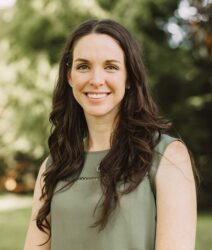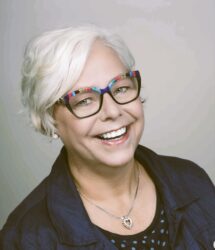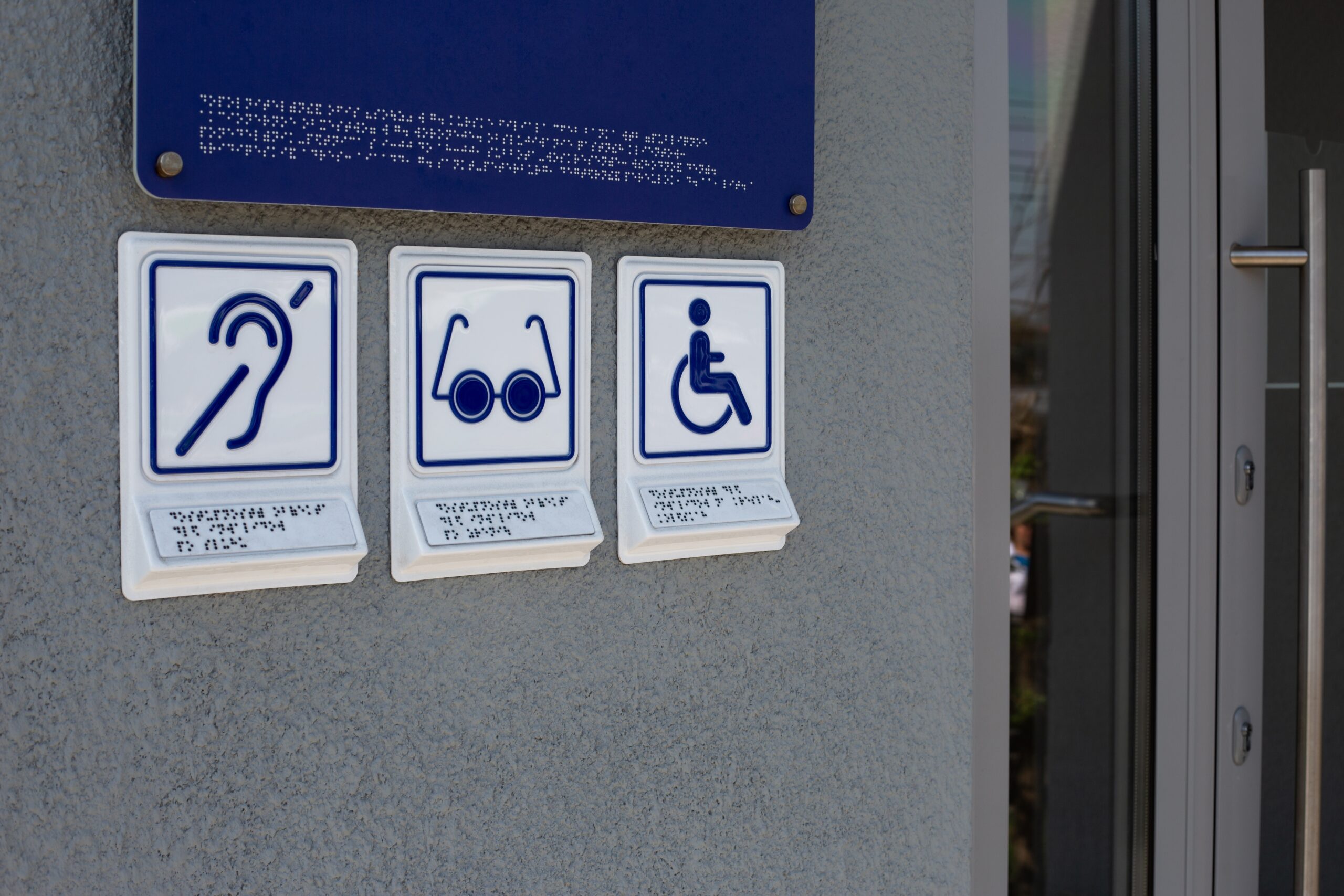Designing accessible events topped almost all meetings industry event agendas in 2024, but few planners understand what is required to make everyone feel welcome even as equal access moves from the desired to the required column in their job descriptions. Most meeting professionals manage the needs of a small subset of attendees who require food, wheelchair access, sound, language or sensory accommodations. As Megan Henshall, strategic lead for Google’s global events team and co-founder of The Neu Project, explained, helping this majority-minority community participate fully is not a compliance problem; it is a business opportunity.
We talked to three 2024 Meeting Professional of the Year winners who work with populations that skew toward needing thoughtful adjustments and found that one of the common pieces of advice was to consider access before you submit the RFP. Let’s learn more.
Ask for Specifics
Dominique DeWitt, CMP, senior event planner, Wounded Warrior Project

Dominique DeWitt grew up thinking about the importance of accessible travel accommodations. Her mother is a full-time wheelchair user who traveled and sometimes would show up as the keynote speaker, but not have a room available with an accessible shower. Her father had cerebral palsy, which brought its own needs. DeWitt also managed her own congenital disability and then married into the military. “I have a soft spot in my heart for military veterans,” she said.
Read More: Meet the 2024 Meeting Professionals of the Year
DeWitt studied event management at the University of Central Florida and went on to earn her CMP. “I feel blessed to get to use some of the hardest parts of my life growing up to help others,” she said. Since her mother was traveling in the 1990s, laws have changed to require hotels to contract for ADA rooms, guaranteeing they will be available when the person arrives, rather than making it upon request.
“Accommodation, to be honest, starts before the RFP with internal stakeholders,” DeWitt explained.
She works closely with the content team to understand their goals. At a recent training, the team wanted to do away with PowerPoint presentations, but those who were hard of hearing could not follow along without visual aids. That has to be taken into consideration.
When the time comes to send the RFP, she asks specific questions about the number of hearing-related vs. mobility-related and other accommodations. In addition to knowing how many rooms have roll-in showers and how many have tubs with handlebars, she also asks about the distance of the rooms to the meeting space. Is the carpet too thick for rolling a wheelchair? Are they too far from the elevator? Are there stairs to get up to the lobby?
When estimating the size of the meeting space, DeWitt adds additional space for wheelchairs to get between tables and service dogs to rest. And if an accessible stage is required, the standard is one foot for every inch in height, so more space will be needed to accommodate a ramp. AV requirements can get pricey fast, as some speakers might not be able to hold a microphone or need assistance.
“If the salesperson doesn’t understand the requirements, that’s an indication that this property may not be the right fit,” she says with a twinkle of experience in her planner’s eye. “It’s more than just the physical of what they have available. It’s a cultural fit.”
Once the contract has been signed, the details about the distance to the nearest accessible restroom will determine how long the breaks need to be, especially if an accessible elevator is required and staff may be using the same facilities.
While most meeting professionals ask about the need for accommodations on the registration form, DeWitt’s team screens every warrior to ensure the right facilities will be in place. “We want everyone to come to every event, but we also know that sometimes, if we can’t accommodate, there’s not much we can do so we have a conversation about how to make it work for the most people,” she explained.
Transportation is another area where resources and timing are stretched. ADA law requires that hotels offer equal accessible transportation for any other transportation available. That means that if a shuttle runs from the airport every 30 minutes, they can’t say that you have to call three days in advance to arrange an accessible one.
“It’s important for planners to know those pieces so that you can ensure that hotels are following the law rather than making the group pay for required transportation,” DeWitt stressed.
This population also includes people who are struggling with PTSD, so she asks about any restrictions for content based on that and often finds that just being able to interact with people facing similar struggles is good for everyone’s mental health. “At the end of the day, seeing everyone come together is rewarding. I feel grateful I get to help and I love talking about it and sharing the insights,” she said.
Read More: FICP Annual Elevated Conversation Around Meaning
The biggest lesson DeWitt has learned is that everyone makes mistakes. “I still do not get it perfect every time, even though this is my background,” she admits. For event planners who don’t know where to start, understand that everybody feels that way at first. “It’s ugly and scary. Nobody wants to offend anyone. Just have grace with yourself and ask, ‘How can I support you best?’ People will tell you what they need. It’s not something they haven’t been asked 100 times before,” she said.
“They would rather you ask than guess,” she added.
Still have questions? DeWitt suggests checking out the free National Network Hospitality page.
Go Beyond the Requirements
Bettyanne Sherrer, vice president and managing partner CanPlan Events & Conference Services Inc., produces World Conference for the Deafblind International Association
 Bettyanne Sherrer also started with a very personal perspective. She built her career in her dream field of advertising, working for large national and international agencies. Then she married and gave birth to two children with special needs. “That changed everything,” she said. “I took a step back and my life became about managing their needs and requirements.”
Bettyanne Sherrer also started with a very personal perspective. She built her career in her dream field of advertising, working for large national and international agencies. Then she married and gave birth to two children with special needs. “That changed everything,” she said. “I took a step back and my life became about managing their needs and requirements.”
Read More: How a Central California Town Added Autism Accessibility to Its Meeting Amenity List
When she was ready to get back to work, she quickly realized that events were where the needs were. She volunteered with associations, met people and learned. Because of her lived experience, she found herself gravitating to human services because it fed her soul.
Now Sherrer is one of four partners of a large national agency producing events all over the world for 10-60,000 people and she sees how much still needs to be done. In fact, she was a reviewer on the national Canadian accessibility documentation and found the requirements just weren’t cutting it.
“There’s a lot more involved in understanding the world of accommodations required for people to remain engaged,” said Sherrer.
Part of the challenge when working with the Deafblind Association is that their needs are multisensory, layered and on a spectrum. Most have multiple impairments, and that includes the audience and the speakers. And because the event was at Rogers Centre Ottawa (formerly Shaw Centre) in Canada’s Capital, all content had to be delivered in French and English.
Read More: Michigan Accessibility Guide
High-level production technology that had to be brought in included a telecoil (t-coil) system popular in movie theaters. The transmission wire stretches around the room to provide a direct audio feed to anyone with a hearing aid. “They just flip a little switch on their hearing aid, and it gets rid of all the background. It’s a beautiful thing,” she said. The loop system for microphones was installed in a grid on the ballroom floor, in breakout rooms and at registration at a cost of $80,000. That was in addition to French, Croatian and British live sign language interpreters.
The event required so many guide dogs that the Centre installed permanent guide dog water stations to serve after the event packed up and left.
Rogers and many other convention centers have been thoughtful about accommodations, but Sherrer has been talking to meeting professionals looking to master the finer points in venues not as adapted, and she has one piece of advice: “Start with the lens of empathy.”
Look at everything from the attendee perspective, reviewing your platforms and your registration site. Is it tabbable? Does it work with screen readers? “A lot of technology advanced during Covid was adopted from adaptive technology that had been used serving the disability sector for years,” Sherrer pointed out.
“Covid brought forth the voice of those with disabilities and impairments and allowed them to engage in a way that they never could before. And once they’re there, they’re not going to be quiet now,” said Sherrer.
It turns out that these attendees have a lot to contribute, so making accommodations at in-person events is now essential, she explained. The needs will only grow as the general population ages and starts to use advanced levels of assistive devices.
The industry is at the beginning of evaluating all the touchpoints from marketing and communications to the registration forms from an empathetic eye. “It’s more than a checkbox; you need to personalize the experience to remove barriers,” she said. That might mean sitting a person in a certain part of the ballroom or warning them about conditions so they can prepare.
Capturing specific mobility needs data, cognitive and physical impairments, and even food allergies will be required. At the same time, meeting professionals have to be thoughtful about how they communicate what will be done with that information.
Consider readability in content slides. “I can’t tell you how many times I’m looking at pretty slides that are horrible because they have no contrast and the font sizes are wrong and you are alienating a portion of your audience. We can do better,” Sherrer said.
Training is an often-overlooked part of the accessibility puzzle. Talk in the pre-con about what will be expected from servers and how an intervener works to orient a person to the food on their plate. Let security know what level of assistance might be necessary if someone takes their dog out for a walk in the middle of the night and needs help pushing the right button on the elevator.
“It’s leveling the playing field so they can come in knowing they will be taken care of instead of being worried,” she said.
Drop the Ageism
Courtney Russell, ICAA wellness lifestyle program director, LiveWell Group
 What does a theater major mother with a master’s in counseling and experience producing large events for tech companies and social groups do when she moves to a new town and a global pandemic hits? Courtney Russell found that the practices advancing in the active adult community could both inform and benefit from fresh approaches happening in the events industry.
What does a theater major mother with a master’s in counseling and experience producing large events for tech companies and social groups do when she moves to a new town and a global pandemic hits? Courtney Russell found that the practices advancing in the active adult community could both inform and benefit from fresh approaches happening in the events industry.
The International Council on Active Aging supports people living longer, healthier lives. “Social engagement is huge in a time of isolation and loneliness,” she said. By bringing the community together, she helps them be happier and healthier, but it has to be done with some intentionality.
Russell’s first suggestion is to stop making assumptions about baby boomers. “Do some homework and leave your ageism at the door,” she said.
Read More: Caesars Launches Wellness Menu
That includes assumptions about technology. Many in the oldest demographic are comfortable with texting and going to websites for information. They may not be on TikTok, but they may love Facebook. “Engage people where they’re at and don’t assume they won’t use event technology,” she said.
When planning for all audiences, Russell suggests being mindful of balance and mobility issues. If people are sitting for long periods, schedule movement breaks. “It gives people a chance to stretch, use the restroom and absorb all the information being thrown at them. It is a better experience for all,” she observed.
“People talk the talk of wellness and self-care, but let’s help people feel comfortable and not guilty about taking time,” Russell said.
Effective registration forms and marketing websites include inclusive language about accommodations that are available and how to access them without them having to ask. That could mean pointing out locations of speakers or stage line-of-sight, sign language interpreter availability (hearing loss as early as in their 40s is becoming more prevalent) and locations of stairways and elevators without referring to ADA requirements.
Similarly, gracefully planning healthy menu options without calling attention to the lack of processed food they might be accustomed to could be a passive teaching moment, and it benefits everyone.
“You’re giving people the opportunity to be healthy without even having to think about it,” Russell said.




